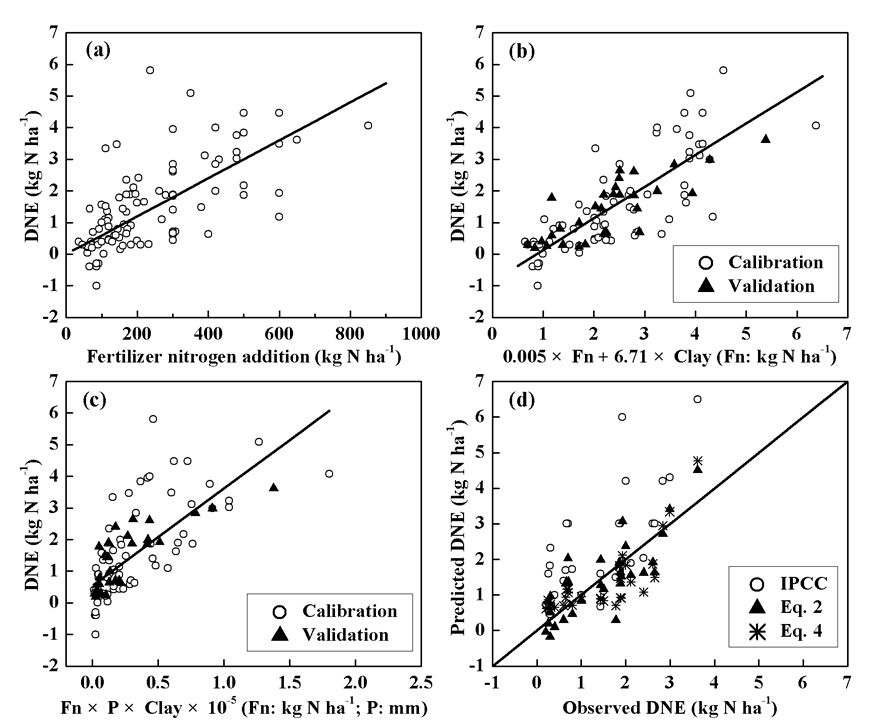Direct nitrous oxide emissions related to fertilizer-nitrogen, precipitation and soil clay fraction
Date:2015-06-08
Direct nitrous oxide (N2O) emissions (DNEs) from croplands are required in national inventories of greenhouse gases. The Intergovernmental Panel on Climate Change (IPCC) guidelines provide an approach using direct emission factors (EFds) to estimate DNEs, which are constants for large regions. The goal of this paper is to establish empirical models to account for the temporal and spatial variations of EFds, which, apart from the nitrogen addition rate, also vary with a range of environmental factors, so as to enhance the accuracy of regional/national DNE estimates. Therefore, the seasonal/annual DNEs (n = 71) from upland croplands, which are the differences in N2O emissions between fields with and without fertilizer-nitrogen addition, were used to statistically relate DNEs to regulating factors including the fertilizer-nitrogen addition rate (Fn), and environmental (climate and soil) factors. The multivariate stepwise linear regression results showed positive combined effects of Fn and clay fraction (Clay) on DNEs (DNE = 0.005 Fn + 6.71 Clay – 0.807, R2 = 0.61, p < 0.001, Eq. (2)). Furthermore, the nonlinear regression of Fn, precipitation (P), and clay fraction was also adopted for prediction (DNE = 10?5 ×3.07 × Fn × P × Clay + 0.543, R2 = 0.50, p < 0.001, Eq. (4)). Validation with an independent dataset (n = 31) suggested that both models were better predictors of DNEs than the IPCC model, which only depends on Fn. These empirical models may provide simple but reliable approaches for compiling regional/national, and even global inventories of DNEs from croplands. However, both models were restricted to a limited sample size. Understandably, more field observations are still required to further validate the global applicability of these simple approaches.
Citation: Zhang, W., J.-X. Gu, and X.-H. Zheng, 2015: Direct nitrous oxide emissions related to fertilizer-nitrogen, precipitation and soil clay fraction: Empirical models, Atmos. Oceanic Sci. Lett., 8, 000–000, doi:10.3878/AOSL20150025.

Figure (a) Relationship between the direct N2O emission (DNE) amount and fertilizer-nitrogen addition rate (Fn); (b, c) combined effects of Fn, clay fraction (Clay), and/or precipitation (P) on DNEs from upland croplands as showed in Eq. (2) and Eq. (4) for both calibration and validation datasets; (d) comparison between observations and predictions by the IPCC model, Eq. (2) and Eq. (4) in the validation dataset. Regression functions presented by the lines are shown in Table 2.
Link: http://159.226.119.58/aosl/EN/abstract/abstract566.shtml#
